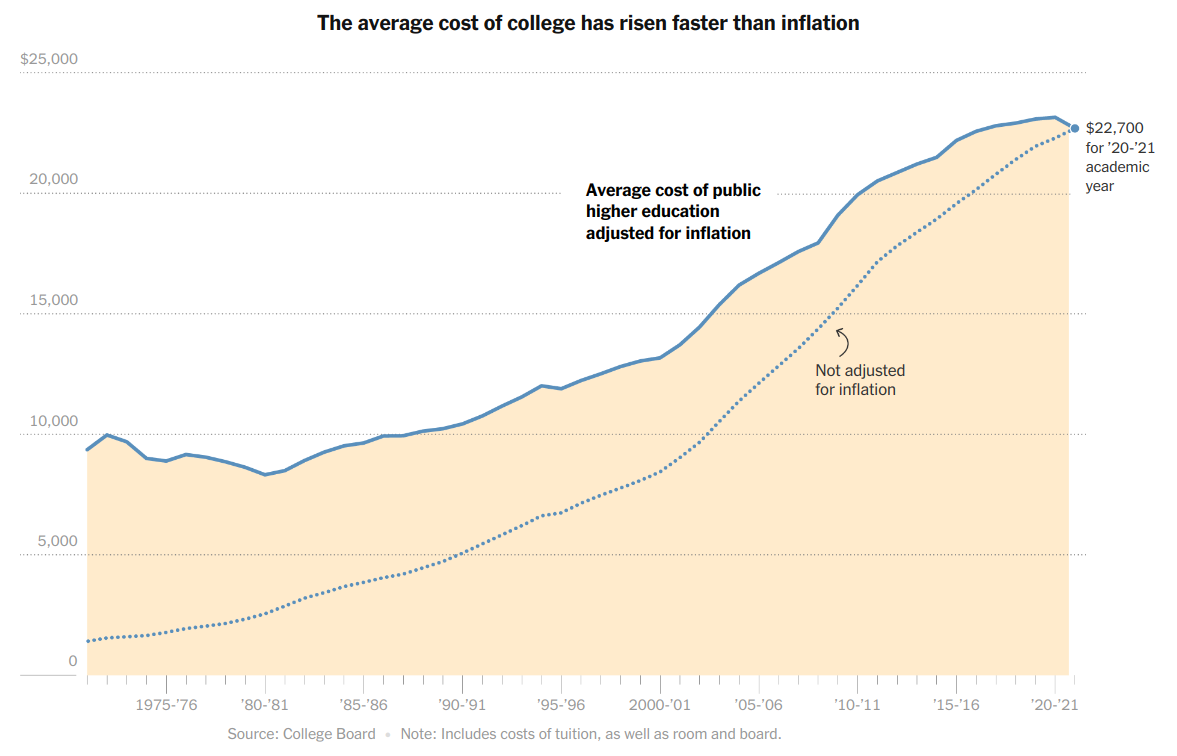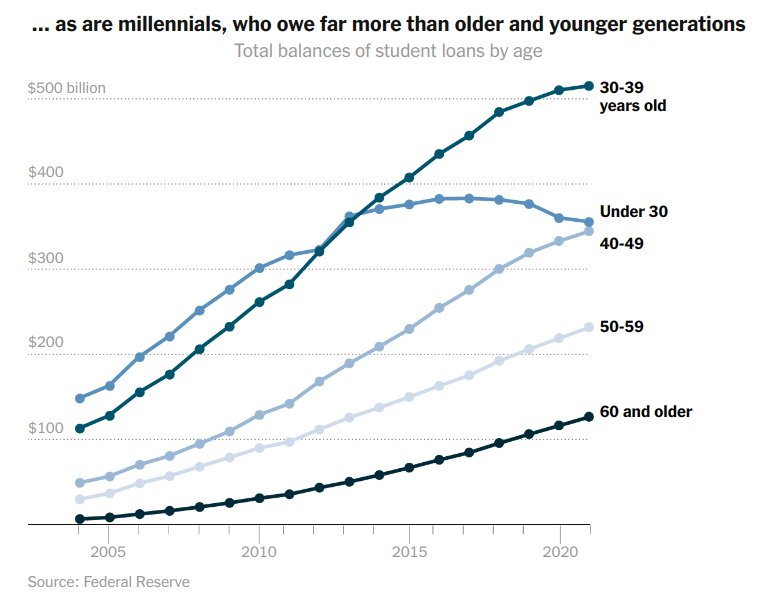Yves here. Key data on student debt show how rapidly it has grown, so that it has become the largest type of non-mortgage consumer borrowing. Tom Neuburger explains the dynamics, that the price of higher education is non-negotiable and student debt allows for higher charges.
Neuburger hoists a comment from Naked Capitalism reader lincoln which sets forth the additional, substantial public subsidies to higher education. What was supposed to be a public good instead has become a source of rent extraction by a loyal Democratic party cohort.
lincoln also mentions that student debt levels didn’t take off until 2008. I believe two factors played a significant role. One was the 2005 bankruptcy reform act, which made student debt the only type of consumer borrowing that cannot be discharged in bankruptcy. A second was the way the crisis was a wrecking ball for many new and recent graduates. In the wake of the financial meltdown, unemployment was higher among college grads than those with only high school degrees. Many 2008 graduates had job offers rescinded, leaving them with no income. Employers cut hours and fired staffers, with those with the least tenure most vulnerable. All those factors meant many student borrowers missed payments, which meant they were hit with higher penalty interest rates, turning their debt burdens into millstones.
By Thomas Neuburger. Originally published at God’s Spies
I recently wrote a piece about Biden and student debt:
Biden Signs Off on Restarting Student Debt. Why?

For those on the left … too many of us have been interested in defending programs the way they were written in 1938.” —Barack Obama, 2006 “I’m glad we won the race in New York, but I hope the Democrats don’t use it as an excuse to do nothing on Medicare.”
Read full story
There I made the point that the road to the debt ceiling deal was entirely avoidable; thus it was a road that national Democrats wanted to take. I also speculated on why this was.
But the student debt part of the discussion deserves its own discussion.
Consider the chart at the top, which shows the rate of student debt growth as a percentage of non-mortgage consumer debt. The rate is astounding.
Now consider this, the rate of increase of the cost of public higher education from the New York Times:

The share of this debt burden is not evenly split. As the Times points out, millennials carry an unequal share. (Note that those under 30 appear to be giving up on college.)

How big is the student debt burden? According to Forbes (paywalled article) as of May, 2023 the student debt picture looks like this (emphasis mine):
- $1.75 trillion in total student loan debt (including federal and private loans)
- $28,950 owed per borrower on average
- About 92% of all student debt are federal student loans; the remaining amount is private student loans
- 55% of students from public four-year institutions had student loans
- 57% of students from private nonprofit four-year institutions took on education debt
Nearly two trillion dollars is the student debt burden today, up from a tenth of that in the mid-2000s.
Neoliberal Government at Work
Why is the national student debt burden so high? In answer, I offer you this, a comment posted by “lincoln” at the excellent economics site Naked Capitalism(emphasis in the original):
If we ever want to properly fix the U.S. student debt crisis, then we need to understand exactly how it was created.
Students borrow money to pay universities, which are the main beneficiary of the $1.7 trillion in outstanding student debt. How much students borrow has ballooned exponentially over the last 15 years. This was during a period of record low borrowing costs (see Fed ZIRP – Zero Interest Rate Policy), and a drop in college enrollment.
Our federal government loans trillions of dollars to a universities students, so these students can pay whatever education related costs the university decides is reasonable. And this cost is non-negotiable. The trillions in federal student loans that universities get is in addition to their exemption from all federal and state income taxes, their exemption from paying property taxes on university land, and their right to issue tax exempt bonds to fund construction, renovation, and operational costs. This does not include the $50 billion per year the U.S. government pays to universities in federal contracts and research grants. These institutions are eligible for almost every government subsidy and tax loophole imaginable.
If nothing is done to reign in and reduce how much universities charge their students, then future student debt is just going to keep ballooning. Forgiving student debt won’t fix this problem, it can only delay a much needed reckoning. …
The ballooning of this debt that started a student loan crisis did not slowly develop over the course of decades. Most of it occurred after the 2008 Great Financial Crisis. Mainstream media has been extremely hesitant to point this out, as well as that universities are the most responsible for creating and perpetuating our student debt crisis.
His bottom line and mine: When government sells education as the answer to government-caused wealth inequality, and makes trillions in student loans available to the industry that supplies it, government is helping that industry fleece its customers.
The student loan program is a transfer of wealth to rich institutions from the working class. How surprising is that in these neoliberal times?


